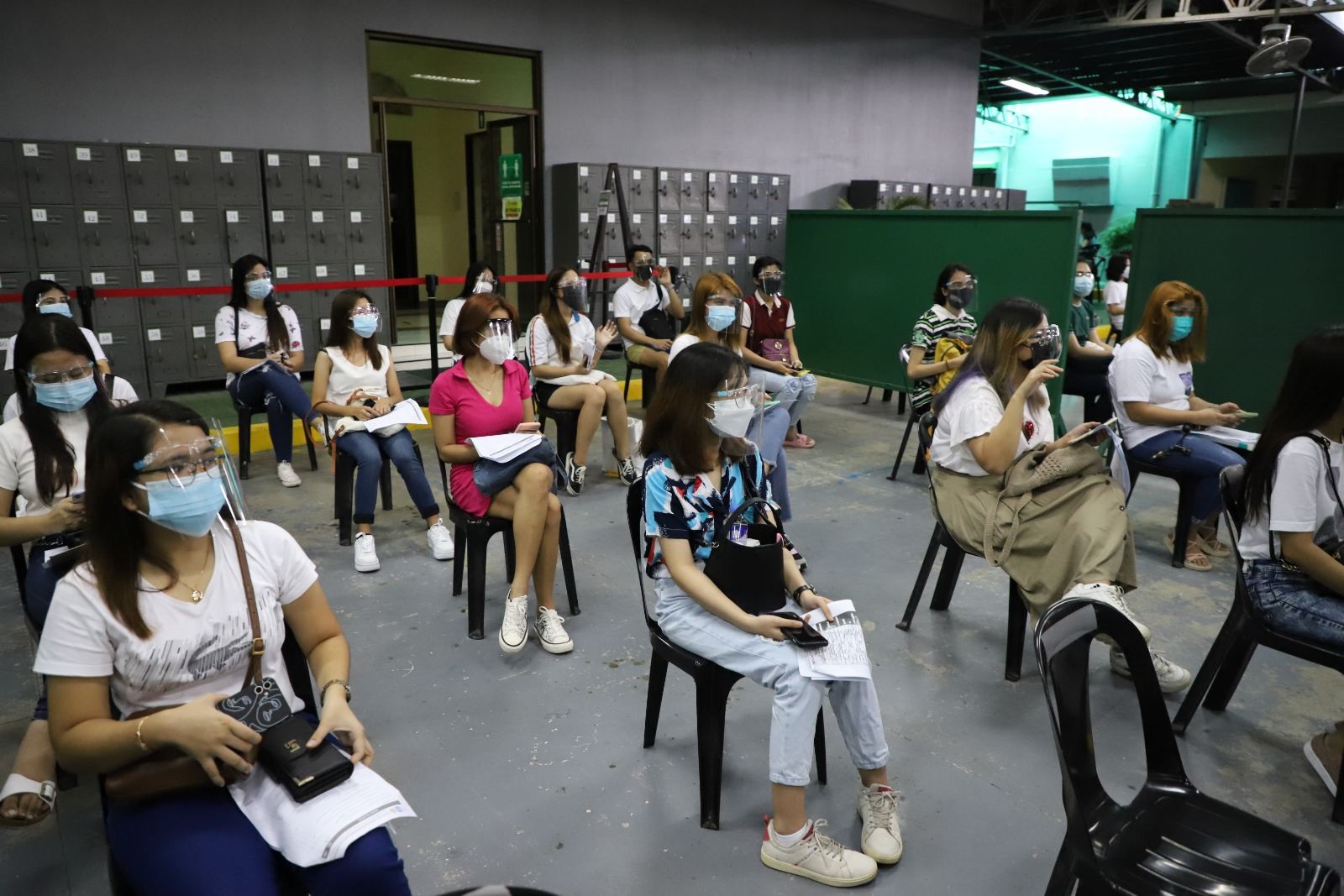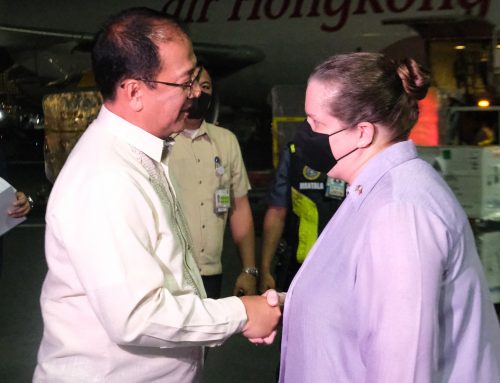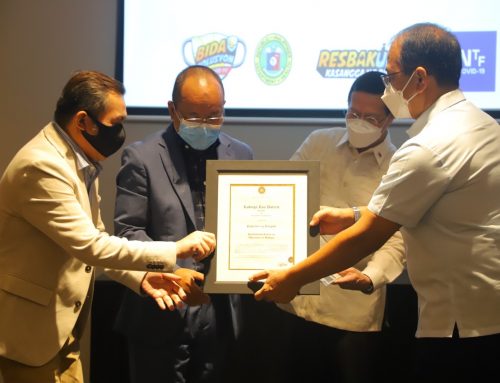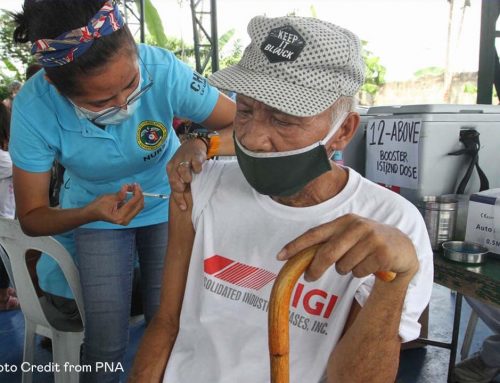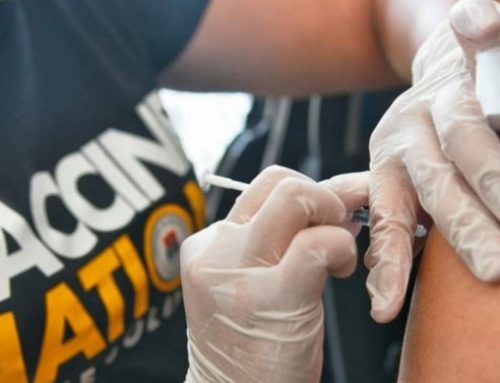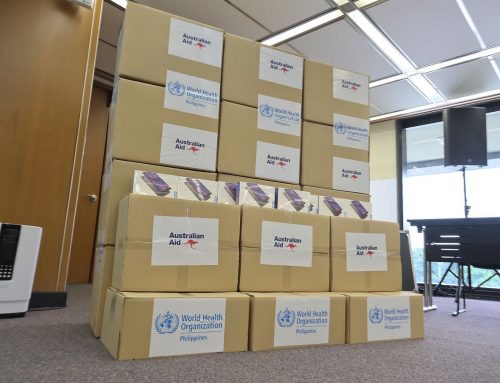PASIG CITY (23 October 2021) — With 724,294 COVID-19 jabs administered on Friday, the National Task Force against COVID 19 urged local government units anew to further ramp up their vaccination throughput in order for the country to achieve a daily jab rate of 1 to 1.5 million.
“Our goal is for LGUs to inoculate 70% of their eligible population with at least one dose by November. We cannot scale up our national vaccination output if we just settle with our current jab rate,” said NTF Chief Implementer and vaccine czar Secretary Carlito G. Galvez, Jr. on Friday in a meeting with local chief executives.
The NTF identified highly-urbanized cities (HUCs) and regions that would take the lead in pushing the country’s daily vaccination output to 1.5 million doses following the influx of vaccine supplies from various manufacturers and the opening of the vaccine rollout to the general population including minors.
“With the steady arrival of bigger COVID-19 vaccine shipments, our LGUs must work double time to realize President Rodrigo Duterte’s directive, and that is, to continue to ramp up their vaccination rollout,” Galvez said.
“Nagpla-plateau tayo noong mga nakaraang araw to just 400,000 to 500,000 jabs daily. If this will continue, hindi natin makukuha ang 50 million [fully vaccinated individuals] by year-end,” he said.
To date, the Philippines has received a total of 94,678,340 doses of COVID 19 vaccines since February.
Of these shipments, more than 58.7 million doses were procured by the government, 24.3 million doses were donations from the COVAX facility, 7.9 million were purchased by LGUs and the private sector, and 3.6 million doses were donations from bilateral partners.
Priority areas for ramped up vaccination deployment
Galvez, along with Interior Secretary Eduardo Año, Health Secretary Francisco Duque, III, and Deputy Chief Implementer and testing czar Secretary Vivencio Dizon, met with governors and mayors to relay President Rodrigo Duterte’s directive for LGUs to scale up their vaccination rates.
During the meeting, Dizon named 50 cities across the regions that will be prioritized in the government’s vaccine deployment.
According to Dizon, these HUCs outside the NCR were given daily vaccination targets of at least 500,000 jabs daily which they need to hit and sustain by October, and then reach a daily jab rate of 800,000 by November.
“We will prioritize HUCs and regions with high impact to the economy. Pero hindi ibig sabihin nito na ang iba’t ibang lugar sa Pilipinas ay hindi papadalhan ng bakuna. Lahat pa rin ay papadalhan pero ang lion’s share, o ang higit sa nakararaming bakuna ay ibubuhos sa mga cities na ito,” Dizon said.
Dizon explained that the NTF and the Department of Health conducted an assessment of LGUs and developed a selection criteria for LGUs that were later on identified as priority areas.
These HUCs must have the capacity to inoculate larger populations as quickly as possible, can store all types of vaccines, and their areas are economic centers that are essential in the reopening of their region’s economy.
According to National Vaccination Operations Center (NVOC) Chair and DOH Undersecretary Myrna Cabotaje, a total of 75,804,550 doses have been deployed to various regions as of October 21.
More than 18.4 million doses were deployed to the NCR, around 11.2 million doses were sent to CALABARZON, while nine million doses where dispatched to Region III.
With the continued arrival of vaccine shipments from different suppliers and LGUs in the NCR about to fully inoculate their target populations, more vaccines are expected to be deployed in the identified priority cities in the coming days.
“Kami na ang bahala sa bakuna. Focus and invest on the implementation of the vaccination program. Mataas na ang supply pero kung mababa ang demand, baka darating ang araw mapupuno ‘yung warehouses natin,” Galvez told the LGUs.
“Hindi pwedeng mabulukan tayo ng mga bakuna. That’s why we need to ramp up and accelerate the vaccination rollout,” he added.
For his part, Año stressed the purpose of the NTF’s meeting with the local chief executives, and that is “to inform our local chief executives that now we have enough vaccines.”
“Kung sa tingin niyo doon sa projected [na vaccine doses] ay kaya niyo pang magdagdag, please tell the NVOC because we will provide you the vaccines,” he said.
Año also shared the observations of the agency’s regional directors regarding the reasons behind the low vaccination rate of some LGUs.
“Minsan, ‘yung hesitancy is not really hesitancy, but more on the issue of accessibility. Meaning to say, if we have more vaccination sites, and bringing more vaccination sites closer to the people — either establishing [more] vaccination sites or assigning transport to get people [to the] vaccination sites — mas maraming magpapabakuna,” he said.
As of October 22, a total of 55,168,455 doses have already been administered nationwide, of which 8,639 were administered to the pediatric A3 group or those aged 12 to 17 years old with comorbidities in 26 pilot vaccination sites.
Meanwhile, a total of 25,441,538 Filipinos have been fully vaccinated, which represents 32.98% of the Philippines’ target population and 23.09% of the country’s total population.
The Philippines aims to fully inoculate 70% of its population or 77 million individuals to achieve herd immunity.
More aggressive, creative vaccination strategies
Dizon said that by November 30, 70 percent of the country’s target population should have received at least one dose of the COVID-19 vaccine, and by December 31, 70 percent of the country’s total population should be fully vaccinated.
He said that this target can be achieved if all LGUs, especially the HUCs, will be more aggressive in their vaccine rollout.
“Most areas are below their daily targets despite sufficient supplies deployed,” said Dizon, as he noted that many LGUs are only vaccinating four times a week instead of six to seven days weekly.
“Kahit may ongoing vaccinations for either disease like polio, hindi dapat tumigil ang pagbabakuna laban COVID-19,” he said.
The NTF also laid out key strategies and interventions that LGUs must implement to further ramp up their vaccination drive.
“Ang kailangan gawin ng LGUs, hire more vaccinators, establish more vaccination sites, prepare for ancillary supplies, and invest on ultra-low freezers. Doon kayo mag-focus sa vaccination not on the vaccines,” Galvez said.
He added that these HUCs must look into the possibility of operating their vaccination sites 24/7, as this measure has been successfully implemented by some cities in Metro Manila.
Meanwhile, Dizon said that vaccination sites can be increased by utilizing existing facilities such as malls, gymnasiums, colleges, and universities.
He also suggested other vaccination strategies such as fixed sites, temporary posts, and mobile vaccination teams for hard-to-reach areas.
Dizon also urged LGUs to be innovative in organizing vaccination teams by hiring additional health personnel, assigning one doctor for multiple vaccination sites to monitor and supervise the inoculations, and tapping volunteers from non-government organizations, schools and societies.
He also underscored the need for LGUs to be more proactive in monitoring and coordinating their respective vaccine supplies.
Dizon said that LGUs must already project the number of days they can consume the vaccine doses based on their targets, and inform the NVOC right away so their requested supplies can be delivered on time.
He also reminded LGUs of President Duterte’s directive, emphasizing that their non-compliance with vaccination targets and other anti-COVID prevention and mitigation measures may result in possible sanctions under RA 7160.
“We need to exact accountability from LGUs and provinces sa pagbabakuna dahil ngayon, meron nang supply,” Dizon said.
In the meantime, Duque called on all stakeholders to work together in order to raise the country’s vaccine throughout and realize its target of inoculating 70% of the country’s total population by year-end.
“I call on all partners in national and local governments to further improve our vaccination initiatives. Let’s continue moving in one accord for the health of Filipino people,” he said. END


